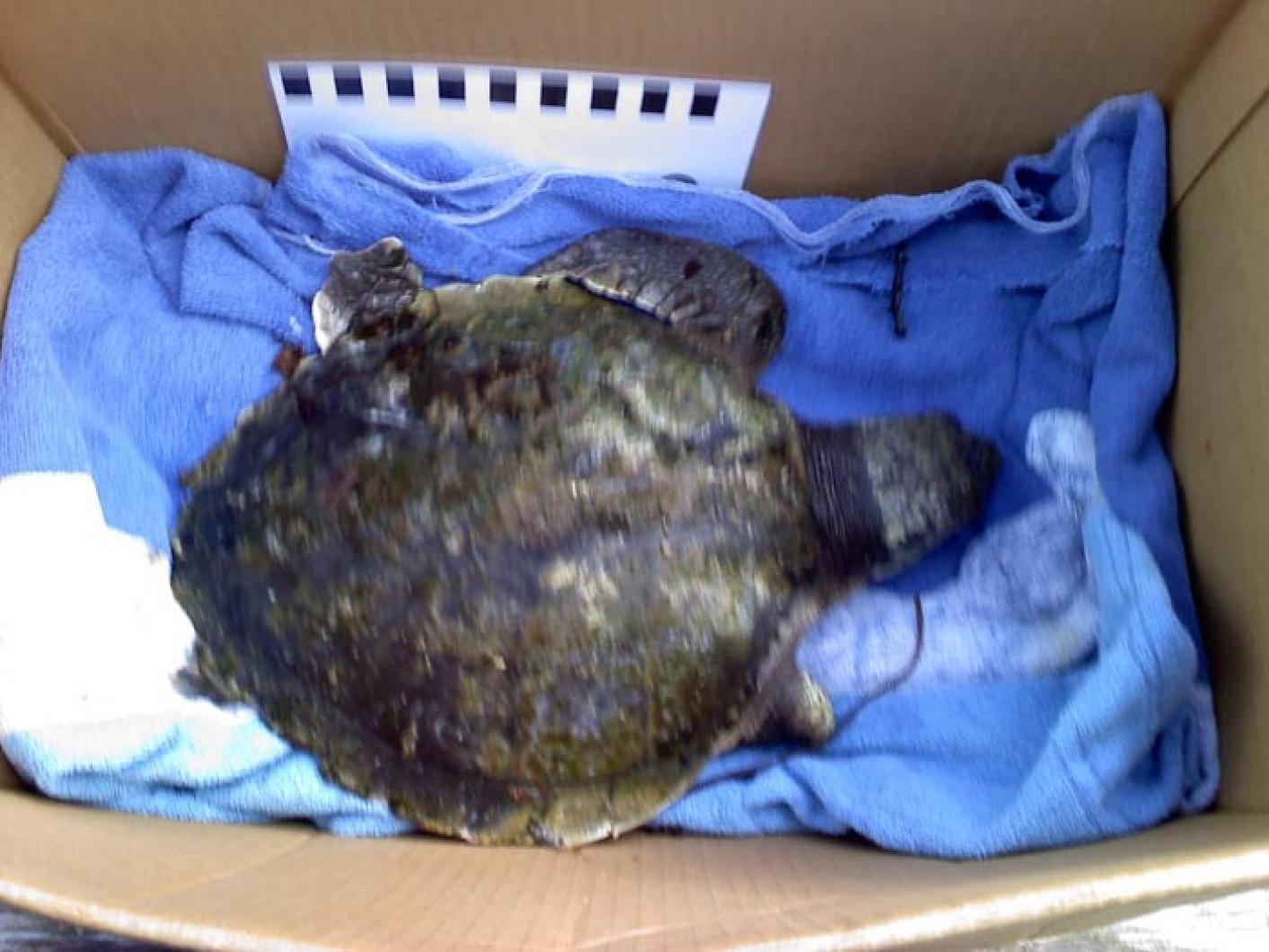Cold, stunned and stranded describes more than just the Vineyarders who got stuck on or off-Island in last weekend’s storm. There was another visitor that was also powerless to get to its destination.
Though Sunday brought the sun and an eventual resumption of ferry service, one Island guest needed a little assistance to get on its way.
A Kemp’s ridley sea turtle found itself in a bit of a situation in Sengekontacket Pond. This young turtle joined the many along the East Coast that were stranded by the storm.
Sea turtles are migratory reptiles that feed off the coast of New England in the summer. Fall’s decreasing water temperatures signal turtles to move south to warmer waters. When water temperatures fall suddenly, sea turtles sometimes get stuck and find themselves in a bit of turtle trouble. The magic temperature is 50 degrees F, below which sea turtles can get stranded.
As cold-blooded animals, sea turtles cannot regulate their body temperature. A rapid decline in temperatures causes these turtles to become “cold stunned.” This is simply a hypothermic reaction that occurs when turtles are exposed to prolonged cold temperatures. It causes a decrease in heart rate, reduced blood circulation and diminished body function. With this decline, the turtle cannot swim, and becomes susceptible to shock and pneumonia.
Once the ability to swim is gone, the turtle finds itself at the mercy of the tides and wind. That is perhaps how this Kemp’s ridley ended up in Sengekontacket Pond.
Luckily, it was found and the proper authorities were notified. Sea turtles are protected under the Endangered Species Act and it is illegal to collect, transport or care for these animals (dead or alive) without the proper permits. If you find a sea turtle, the best thing that you can do for the animal is to call the New England Aquarium at 617-973-5247, Mass Audubon’s Wellfleet Bay Wildlife Sanctuary at 508-349-2615, or Mass Audubon’s Felix Neck Wildlife Sanctuary at 508-627-4850. The same rules apply for marine mammals, such as seals and whales.
The majority of sea turtle strandings occur on Cape Cod beaches on the inside of the Cape “hook,” where these animals get trapped and then the rapid temperature drop leaves them stunned. Juvenile sea turtles often wash up during the first storm event of late October and early November. Last year, more than 200 sea turtles stranded on the Cape, with Kemp’s ridley, green and loggerhead turtles being the most frequent species found. It is less common for sea turtles to come ashore on the Vineyard, though we do typically get one or two every year or so.
With quick action and exceptionally helpful Steamship Authority personnel, we potentially averted sea turtle tragedy. Steamship Authority staff named the Kemp’s ridley Robbie after the agent who helped make arrangements to get the turtle to Woods Hole, where it was transported to the New England Aquarium for care.
Trained aquarium staff will examine and treat Robbie, slowly allowing his body temperature to increase incrementally. If stunned turtles are warmed too quickly, they become susceptible to pathogenic bacteria, fungal infections and pneumonia.
Stranding season will continue until early January, after which most sea turtles found on beaches are dead because water temperatures are too cold for their survival.
Sea turtles that strand early have the best chance for survival, so send good vibes for Robbie’s recovery. It is likely that all of last week’s stranded travelers have made it to their destinations. Hopefully, he will be the next to make it home.
Suzan Bellincampi is director of the Felix Neck Wildlife Sanctuary in Edgartown.








Comments
Comment policy »